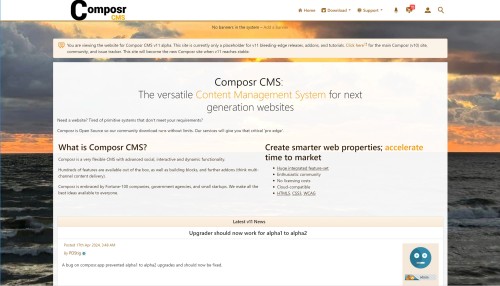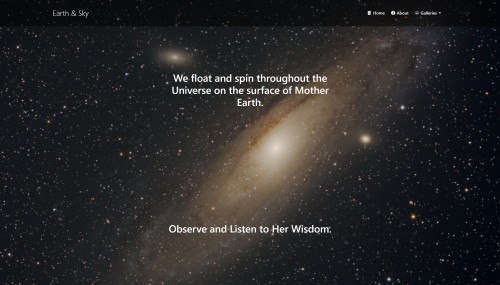Featured Sites: A-Z Index
H
Newest 10 Entries
| Question | What is the purpose of the Code Editor? |
|---|---|
| Answer | The Code Editor is a web-based tool for editing Composr code files directly on the server. It requires password authentication and automatically manages overrides within _custom directories. To access it, go to yourbaseurl/code_editor.php. |
| Question | How can I export and import custom addons? |
|---|---|
| Answer | Composr allows exporting addons as TAR files, containing all necessary files and an addon.inf file for metadata. You can import these addons to share and reuse them across different Composr installations. To do this, make your necessary files for the addon in the Composr installation, and then go under Admin Zone > Structure > Addons > Export addon. You can select the relevant files for the addon, provide information about the addon, and then download the TAR file (which can then be imported on other Composr sites). |
| Question | Can you give an example of creating a new module? |
|---|---|
| Answer | Imagine creating a "Testing" module to manage collaborative testing:
|
| Question | What are the different ways to extend Composr functionality? |
|---|---|
| Answer | You can extend Composr through:
|
| Question | How can I customize Composr without modifying the core files? |
|---|---|
| Answer | Composr offers a robust override system. Instead of altering the original files, create a parallel structure within _custom directories. For example, to modify site/pages/modules/polls.php, place your customized version in site/pages/modules_custom/polls.php. The tutorials outline additional information on how to utilise overrides. |
| Question | What are the main components of the Composr framework? |
|---|---|
| Answer | Composr consists of:
|
| Question | How can I embed third-party widgets into my Composr pages? |
|---|---|
| Answer | Composr supports embedding widgets from various websites, like Google Maps, Vimeo, and YouTube, by simply pasting the URL. For manually embedding widget code, you can paste it into the HTML source view of the WYSIWYG editor or within Comcode html tags if not using the WYSIWYG editor. |
| Question | What is the difference between blocks and boxes in Composr? |
|---|---|
| Answer | Boxes are visual elements that provide a container for content, while blocks are functional units that generate and display dynamic content. Although blocks often appear within boxes in the default templates, they are not inherently tied to any visual representation. |
| Question | Can I customize the appearance of blocks? |
|---|---|
| Answer | Yes, you can style blocks by editing the associated templates and CSS. Templates are typically named after the block they represent. For example, the main_news block uses the BLOCK_MAIN_NEWS.tpl template. |
| Question | How do I create custom filter forms for my content? |
|---|---|
| Answer | The main_content_filtering block can help you generate filter forms automatically. You can use it to create a default form and then customize the generated Filtercode string to refine the filtering options. Once satisfied, you can either continue using the block or extract the HTML and modify it further. |
Top 10 Entries
| Question | Why are my searches slow, and how can I improve search speed? |
|---|---|
| Answer | Slow searches can occur when dealing with large amounts of content. Here are some workarounds and solutions:
|
| Question | How does the search engine handle different languages? |
|---|---|
| Answer | Composr's fast custom index supports multiple languages. Content is indexed based on its translated version, ensuring that you get relevant results even when searching in a different language. |
| Question | What are quoted phrases and how do they work? |
|---|---|
| Answer | Quoted phrases allow you to search for an exact sequence of words. For example, searching for "red apple" will only return results containing that exact phrase. Keep in mind that enabling quoted phrases can increase disk space usage. |
| Question | How do stop words affect search results? |
|---|---|
| Answer | Stop words are common words (like "the", "a", "is") that are ignored by the search engine because they add noise and don't contribute to the meaning of the search query. You can customize the list of stop words for the fast custom index. See the search tutorial for more information. |
| Question | How can I improve my search results? |
|---|---|
| Answer | Here are some tips for improving search results:
|
| Question | What is the fast custom index and why should I use it? |
|---|---|
| Answer | The fast custom index is Composr's own search engine, designed to be faster and more efficient than MySQL full-text search, especially for large websites and filtered searches. Benefits of the fast custom index:
Downsides of the fast custom index:
|
| Question | Can I filter my search results? |
|---|---|
| Answer | Yes, you can filter your search results by:
|
| Question | What is the difference between natural and boolean searching? |
|---|---|
| Answer | Natural search is a more relaxed approach where you type in your search terms and Composr tries to find the most relevant results, even if they don't contain all the words. It's like a Google search. Boolean search requires more precision and uses operators like "+", "-", and quotation marks to define exactly what you're looking for. For example, searching for "+car -maintenance" will only return results that contain the word "car" but not "maintenance". |
| Question | How do I search my Composr website? |
|---|---|
| Answer | There are a few ways to search your Composr website:
|
| Question | How do I mark correct answers in a quiz? |
|---|---|
| Answer | For questions with predefined answers, you can mark correct answers by adding [*] after the answer. If no answer is marked correct, the question will require manual marking. You can also use the [UNMARKED] tag after a question to exclude it from scoring. |








